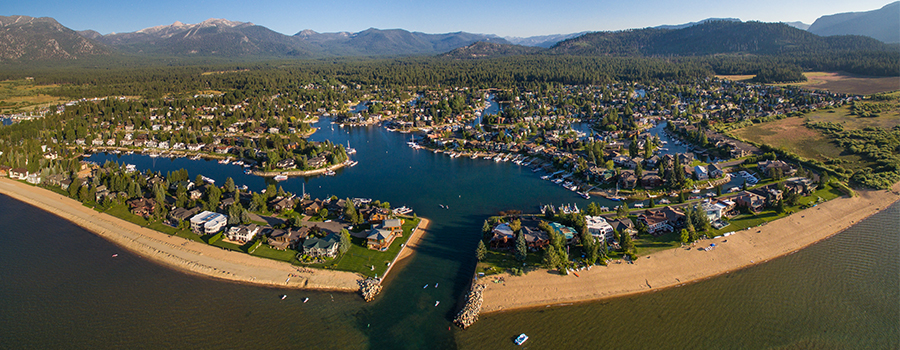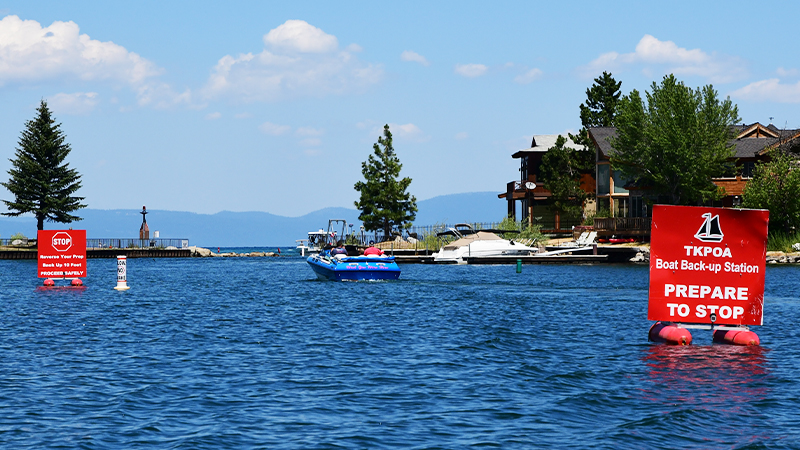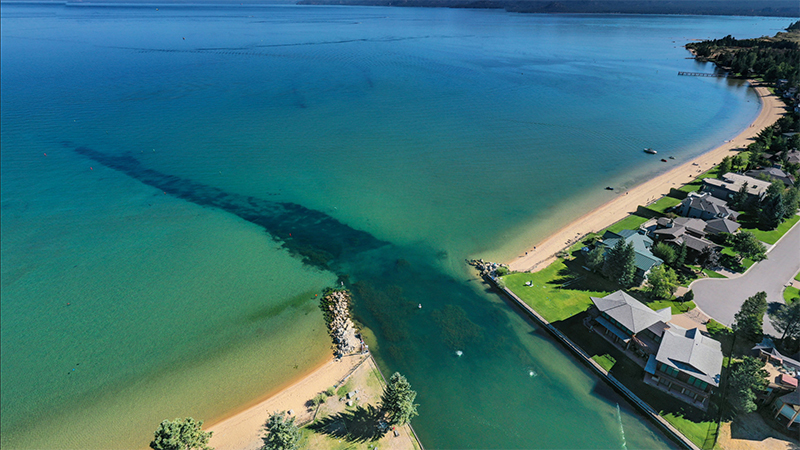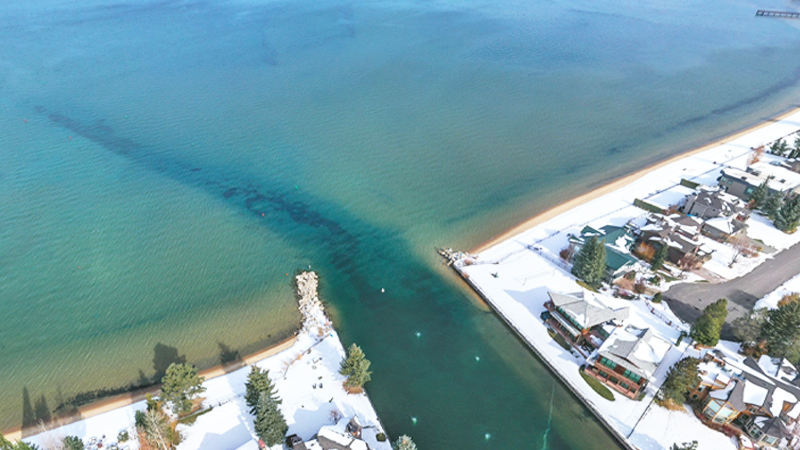Aquatic Invasive Weeds in the Tahoe Keys
| Aquatic weeds, unintentionally introduced by humans, have taken over more than 90% of the Tahoe Keys’ lagoons. These problem plants are growing out of control in the Keys and are spreading into Lake Tahoe proper. Left unchecked, aquatic invasive weeds threaten to destroy Lake Tahoe’s native ecology, pristine water quality and world-famous clarity. In January 2022, the Tahoe Regional Planning Agency and Lahontan Water Quality Control Board unanimously approved the Tahoe Keys Control Methods Test - a multi-faceted test aimed at addressing the aquatic weed problem in the Tahoe Keys' lagoons. Click here for more information about the Tahoe Keys Lagoons Aquatic Weed Control Methods Test. Read the League's official comment letter in support of the proposed test and our op-ed in the Reno Gazette Journal.  |
To overcome the aquatic weeds problem in the Keys – and safeguard Lake Tahoe for the long term – the League is focused on three goals: CONTAIN, TEST & CONTROL.
Bubble Curtain & Sea Bins
In 2017, the League began funding scientific tests and innovative pilot projects in the Keys lagoons. League scientists worked with experts from Canada and the Tahoe Keys Property Owners Association to design, fund and install a custom underwater wall of bubbles or “bubble curtain” across the west channel between the Tahoe Keys lagoons and Lake Tahoe. In early 2021, a second bubble curtain will be installed across the east channel connecting the Tahoe Keys Marina to the Lake.
This technology mimics the bubble nets humpback whales use to corral and catch prey. In this case, the bubble wall blocks fragments from leaving the Keys lagoons by dislodging them from passing boats and corralling them to the edges of the channel. There, the fragments are easily collected and removed by the seabins, which act as floating trash cans.
|
|
Eyes on the Lake
Our citizen science program trains volunteers to identify and report aquatic invasive species using a smartphone app, which is free to downloaded here. The League has been training Tahoe Keys Property Owners Association members for the past seven years, giving them the tools to monitor and report on the problem at their back doors.
Boat Backup Station
Aquatic weeds can get tangled in boat propellers and carried into the Lake. The League supported the creation of a mandatory boat backup station for boats exiting the west channel of the Keys. By reversing their propellers, weeds are dislodged inside the Keys before they can hitch a ride into the Lake.

While progress has been made in containing the spread of invasive weeds, the tools we have now are not sufficient to overcome the massive, 172-acre aquatic weed infestation in the Tahoe Keys lagoons. The Tahoe Keys Control Methods Test implements innovative and proven tools to identify an effective, Lake-friendly, long-term treatment across the Keys lagoons. Visit tahoekeysweeds.org for more information and keysweedsmanagement.org for the most current updates about the test.
800x450.jpg)

This photo of weeds creeping out of the Tahoe Keys and into the Lake itself illustrates the immediate threat to the Lake's clarity and delicate ecology. For years, the League has advocated for the immediate removal of the Tahoe Keys Complex. In October 2020, our efforts came to fruition when active treatment of the densest growth in the Complex started using SCUBA diver-assisted suction dredging. The League provided a donation that unlocked public funding to start the weed removal.
The photo below, taken in November 2020, shows that suction dredging was effective in eradicating nearly all of the weeds in this heavily infested area. With additional support and advocacy from the League, treatment of the Tahoe Keys Complex will continue in 2021.
Click to explore interactive panoramas of the Tahoe Keys Complex BEFORE and AFTER treatment.
 Photos courtesy of Sierra Overhead Analytics.
Photos courtesy of Sierra Overhead Analytics.




